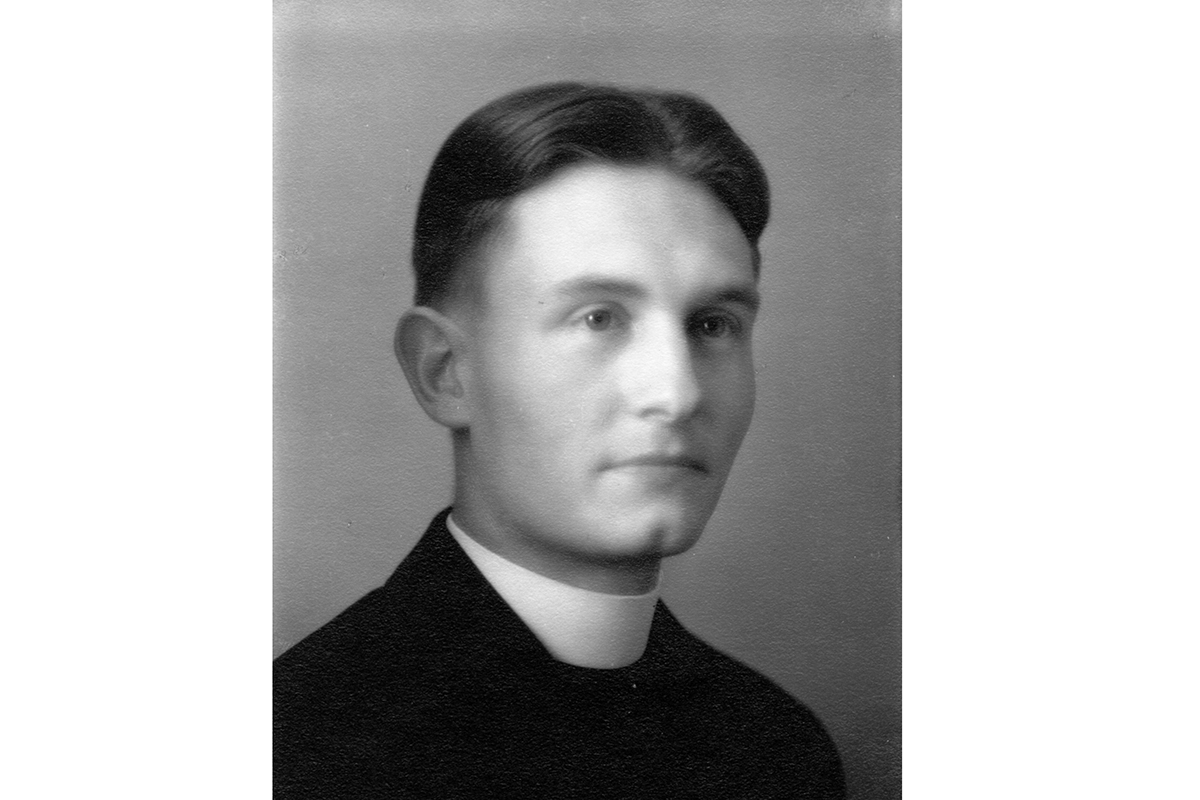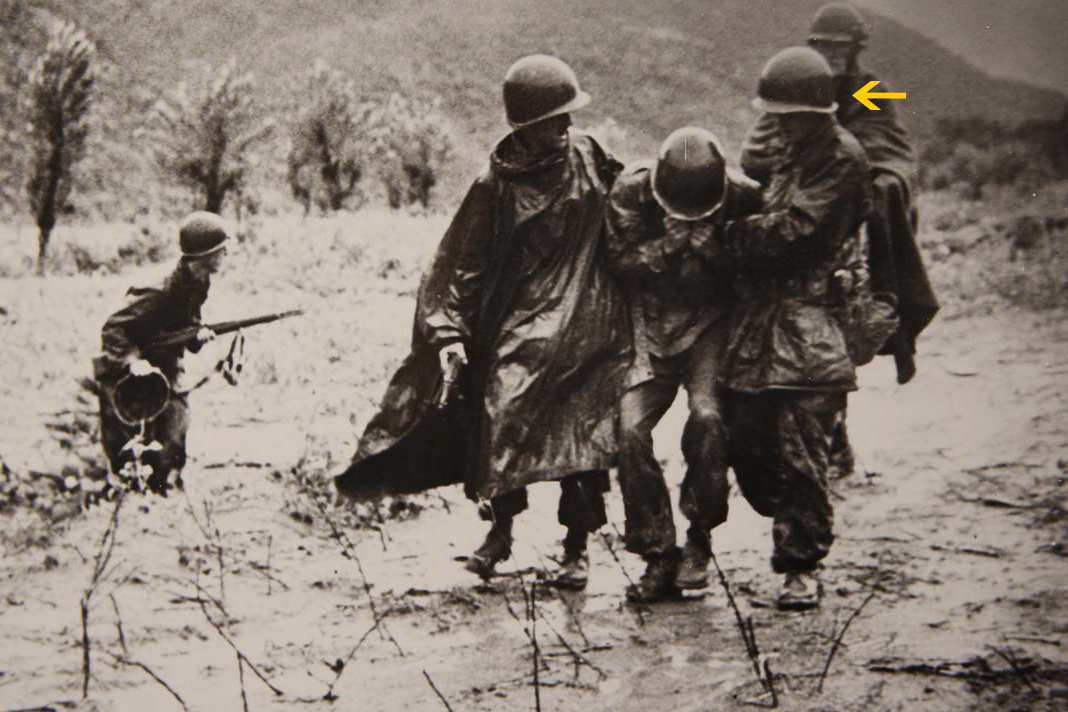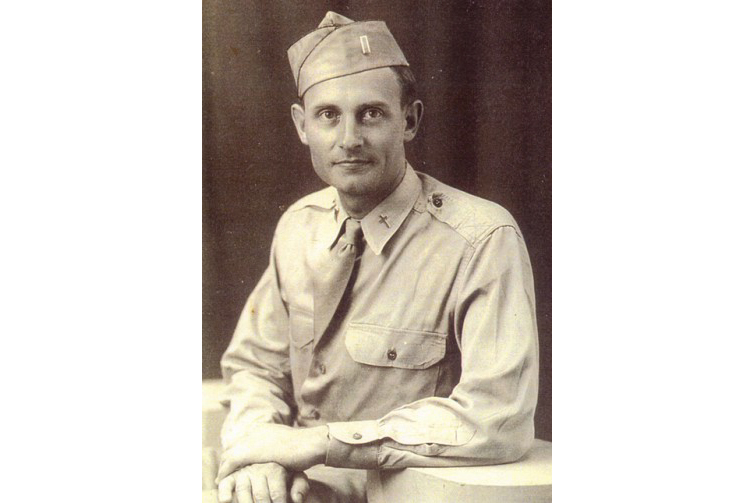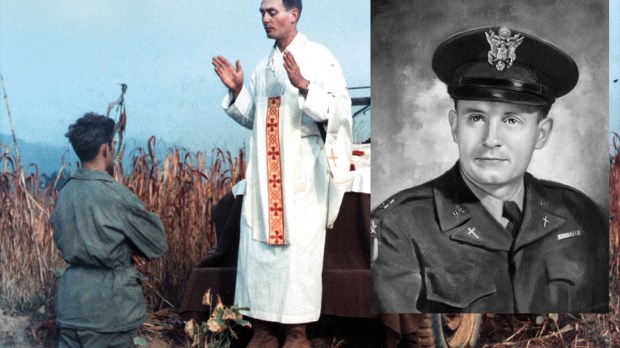Lenten Campaign 2025
This content is free of charge, as are all our articles.
Support us with a donation that is tax-deductible and enable us to continue to reach millions of readers.
Emil Joseph Kapaun was born on a farm near Pilsen, Kansas, in 1916. Pilsen was a tiny town of less than 100 people named after the city of Pizen in the Czech Republic. His parents were Czech immigrants and devout Catholics. Emil, besides being an excellent student, became quite adept at repairing farm equipment and machinery. This knowledge would prove very beneficial later on when he was a prisoner of war.

Emil Kapaun was ordained a priest on June 9, 1940. In 1944, he joined the U.S. Army Chaplains Corps and was assigned to serve in Burma. He left the army in 1946 to seek an advanced degree in education. He knew in his heart that his priestly ministry was to be a chaplain so, upon receiving his Master’s Degree in 1948, he re-enlisted in the Chaplain Corps.
During the Korean War, Captain Emil Kapaun was the Catholic chaplain assigned to the 3rd Battalion of the 8th Cavalry. On November 1, 1950, the feast of All Saints, Father Kapaun celebrated Mass for the soldiers in his battalion. In the minds of the troops the war was about over.
The North Koreans had been beaten back by the U. S. and United Nations forces. The guys were starting to think about being home for Thanksgiving and Christmas. Those pleasant thoughts of being home for the holidays were a bit premature. Right after midnight of November 2, All Soul’s Day, their world exploded. The area held by 3,000 American soldiers was unexpectedly attacked by a force of more than 20,000 charging Chinese troops. The Americans, taken by surprise and fighting valiantly, never had a chance.

Father Kapaun ran from foxhole to foxhole, dragging out the wounded and giving Last Rites to the dying. Over the sound of gunfire and explosions he heard confessions. Feverishly working beyond the American lines in “no-man’s land,” he actually stopped an execution and negotiated with the enemy for the safety of wounded Americans. No one knows how many young soldiers he carried to safety on his back. Going back again and again he was finally taken prisoner as he tried to rescue another wounded soldier. He was not the only American GI captured that night.
By daybreak the battle was over and hundreds of newly captured American POWs, including Father Kapaun, began a forced 87-mile “death march” to a POW camp. The earlier thoughts about Christmas in America and drumsticks on Thanksgiving quickly evaporated as every step in the mud and snow and freezing cold now occupied the minds of the young soldiers who had suddenly become prisoners of war.
4 Saints who served in the military
The “march” was brutal. Those wounded and unable to continue were shot dead. Father Kapaun picked up a wounded POW and began carrying him on his back. He implored others who were still in fair condition to do the same. Some followed his example and somehow, some way, many managed to make it alive to the prison camp.
Father Kapaun cared not an iota about himself. Against the orders of his Chinese guards he cared for the sick and wounded, built fires for warmth and cooking, searched for scraps of food, and even set up a makeshift system to purify drinking water. What infuriated the guards was how Father Kapaun managed to gather the men together, officers and enlisted men, black men and white men, even atheists, agnostics and others, to join together in saying the Rosary.
Father Kapaun became an inspiration to the other POWs. The priest would preach openly to the men even though his captors ordered him not to do so. He would pray one-on-one with POWs and some even embraced the faith and were baptized. Praying was banned and when Father Kapaun ignored it and prayed with his men his captors would strip him naked and make him stand on a block of ice for hours on end. It is hard to imagine enduring such cruelty.
On Easter Sunday 1951, the bedraggled, starving prisoners saw a silhouetted figure standing alone, illuminated by the morning sun. As the men approached they realized it was Father Kapaun. He was wearing his purple stole and holding a Roman Missal. Somehow he had received permission to hold an Easter Service. He could not say Mass but he read some Psalms and everyone recited out loud the prayers from Good Friday including the Stations of the Cross. Survivors say that some men openly wept.
Read more: Pentagon: Better than even chance that Emil Kapaun’s body will be found
Father Kapaun, worn down from the horrendous conditions and suffering from his own wounds and poor treatment, died on May 23, 1951. He was credited with saving hundreds of lives through the loving care, compassion and spirituality he demonstrated to all his men.
His awards include the Congressional Medal of Honor, the Distinguished Service Cross, the Bronze Star and many others.
In 1993, Captain Chaplain Emil Joseph Kapaun was declared a Servant of God by Pope John Paul II. The canonization process of this selfless priest is underway and there are two miracles under investigation at the present time. The simple priest from a little farm in Kansas is truly an inspiration for us all.
Servant of God Emil Kapaun, please pray for us.

LEARN MORE
“Last Rites” refers to the sacrament now generally referred to as Anointing of the Sick.
No. 1523 of the Catechism of the Catholic Church explains that this sacrament is for those who suffer from serious illness and infirmity, and “even more rightly is it given to those at the point of departing this life; so it is also called sacramentum exeuntium (the sacrament of those departing).”
“The Anointing of the Sick completes our conformity to the death and Resurrection of Christ, just as Baptism began it. … This last anointing fortifies the end of our earthly life like a solid rampart for the final struggles before entering the Father’s house.”
Those who are suffering serious illness, and especially those in the danger of death, are encouraged to receive this sacrament.

